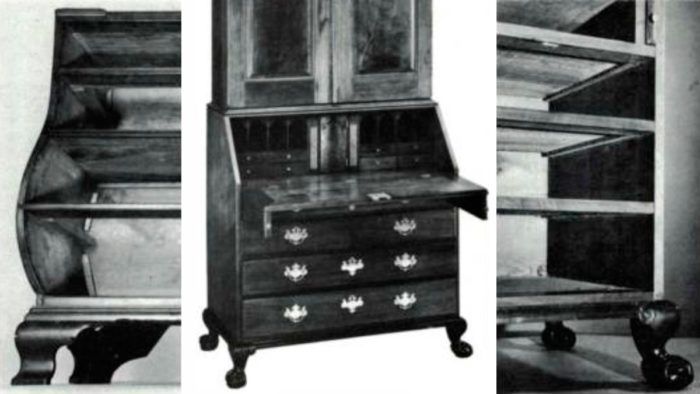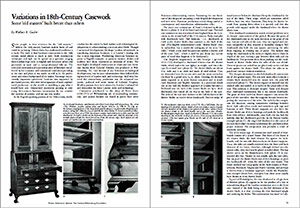Variations in 18th-Century Casework
Some 'old masters' built better than others
Some people, in their reverence for the “old masters,” believe the 18th-century furniture makers knew all and could do no wrong. Others claim that traditional excellence is a myth. The truth is that furniture construction in the 18th century varied almost as much as style—both construction techniques and style can be spread on a spectrum ranging from London high-style to English and American urban and provincial, to rural, and to non-professional folk art. The style and construction of a particular piece of furniture was affected by the economic and commercial conditions prevailing at the time and place it was made, as well as by the professional and ethnic background of the maker. Patronage was extremely important—provincial furniture was supported by provincial patrons, who were either ignorant of more sophisticated production, or else unable or unwilling to pay what it would have cost. Generalized statements praising or criticizing 18th-century furniture construction do not consider the varieties of context, and are not very useful.
In the English-speaking portion of the 18th-century world, London was the center for both stylistic and technological developments in cabinetmaking as in most other fields. Though Continental developments did shape London cabinetwork, in considering American furniture, it is London’s leading role that is most important. Proclaiming American furniture superior to English examples, as patriotic curators, dealers and students have done, represents an inversion of values. The most highly developed construction in chairs and case furniture known from Colonial America was produced in Williamsburg, Va.— not because of any American technological developments, but because cabinetmakers there followed the highest levels of London style and technology. And what fostered this extraordinary production was the advanced economic, political, and social status of Colonial Virginia. Wealthy patrons there were attuned to London’s cultural life and demanded the latest London styles and technology.
Case pieces attributed to the shop of Peter Scott (1694-1775) of Williamsburg are of outstanding construction, and possess features not found in pieces from other American cabinetmaking centers. Examining the case furniture of this shop and comparing it with English developments and with other American production reveals things useful to contemporary and reproduction cabinetmakers alike.

From Fine Woodworking #23
To view the entire article, please click the View PDF button below.
Fine Woodworking Recommended Products

Stanley Powerlock 16-ft. tape measure

Jorgensen 6 inch Bar Clamp Set, 4 Pack

Bessey EKH Trigger Clamps





















Log in or create an account to post a comment.
Sign up Log in